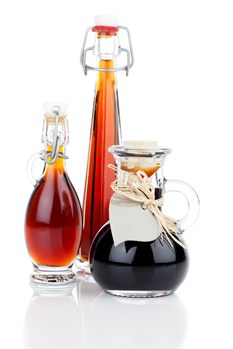Warm weather and budding trees are clear signs the maple sugaring season is over. With nights failing to fall below freezing, the sap flow slows down. And, as the leaves begins to bud, they spur a chemical change within the tree, making the sap that continues to seep through the spiles bitter, Michigan State University Extension explained. As such, this is the time of year when maple syrup producers begin to pack up their operations and wind down for the season.
To make sure your maple syrup operation has another great year next spring, it’s important to perform a few housekeeping tasks before the end of the season.
1. Inspect all your equipment
While pure maple syrup is a natural food, with its only ingredient readily available in the trunks of trees, the equipment involved is intrinsic to its production. Spiles and buckets, or a system of tubing, are necessary for collecting the sap; pans and heat sources are needed to remove gallons of excess water; and shell and tube heat exchangers are essential to achieve a desirable consistency and kill off and remove bacteria and bugs.
At the end of sugaring season, don’t put away any equipment without a thorough inspection. Now is the time to replace any cracked, warped or rusted pieces. That way, you’ll be ready to go when the weather begins to warm up next year.
2. Review your tappable trees
The first step in producing high-quality maple syrup is tapping excellent trees. Take a careful walk through your sugar bush to identify any dead, diseased or damaged trees, the University of Massachusetts Extension suggested. Look closely to determine whether any trees are infested with insects. Finally, pay attention to the quality of sap each tree produces. If certain trees are producing smaller amounts of sap, or sap with an off taste, it might be time to retire them. Once you’ve determined which trees are no longer serving your operation, cut them down. Clearing your sugar bush of these trees will make room for young, healthy trees to grow faster.
3. Keep everything clean
The maple syrup production process is an incredibly sticky one. Starting with the sap, through the evaporation to the final pasteurization and then bottling, every piece of equipment involved in the process is susceptible to becoming coated with sugar. Additionally, since the product is procured and typically prepared outdoors, there’s always a chance of dirt, debris and bugs getting stuck to equipment. To ensure your equipment stays in top condition, and to set the stage for high-quality syrup next year, it’s important to remove the sticky ooze as well as any insects or debris. Hot water is the key ingredient for much of your cleaning work, since detergents and soaps will leave behind unwanted flavors that will inevitably make their way into next year’s batch. If you do want to use a product to further sanitize equipment, it’s best to refer to the manufacturer for advice, Pennsylvania State University Extension advised. The end of maple syrup season can be bittersweet. Once the sap flow begins to trickle to a stop and the buds come out, you know that you’ve collected all the sap you can this season. Now, you have a summer of selling delicious pure maple syrup ahead of you.
If you find that at the end of sugaring season, you’re ready for new equipment or have questions about how to care for your shell and tube heat exchangers, reach out to the helpful heat transfer engineers at Enerquip.

